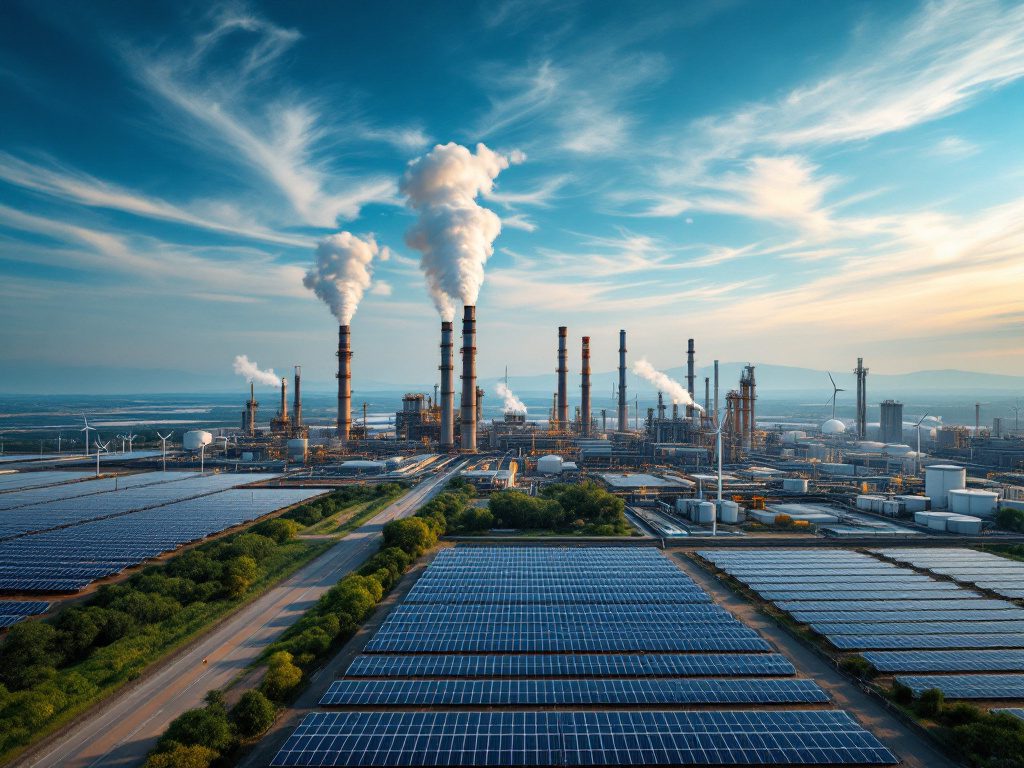Touting Progress in the Age of Carbon Capture
It’s easy to get swept up in the latest headlines boasting corporate America’s tackling of the climate crisis. The recent announcement that ExxonMobil and Calpine Corporation have inked a deal to capture and store up to 2 million metric tons of carbon dioxide (CO2) annually from Calpine’s Baytown Energy Center in Texas has all the right optics. On paper, the numbers impress: a commitment to turn the CO2 emissions from a major natural gas facility into a pipeline for storage, all framed as a boon for clean energy production. ExxonMobil’s press team touts this as a critical leap toward sustainability, with the projected 500 megawatts of low-carbon electricity supposedly enough to power over 500,000 homes.
But look past the headlines and you face a pressing question—is this truly a breakthrough for decarbonization, or are we watching the latest evolution of fossil fuel industry PR?
Leading voices in energy transition aren’t tossing rose petals just yet. According to Dr. Leah Stokes, a climate policy expert at UC Santa Barbara, “CCS is not a license to expand fossil fuel use.” The technology’s promise is matched only by its cost and complexity, and experts warn technology alone cannot substitute for a dramatic shift in energy systems. The Baytown Carbon Capture and Storage (CCS) Project fits a familiar blueprint: industrial-scale promises, strong job creation claims, and unwavering faith in the magic of technological fixes.
What’s undeniable, however, is that ExxonMobil’s Gulf Coast CO2 pipeline—the world’s largest—now positions the company at the heart of America’s emerging carbon management sector. And with Calpine now the sixth CCS contract in Exxon’s portfolio, the oil giant can claim to have roughly 16 million metric tons of CO2 under management contracts each year. That’s no small feat—if those tons truly stay in the ground.
Unpacking the Realities: Promise and Pitfalls
The details reveal the contradictions inherent in America’s reliance on CCS as a climate solution. Barry Engle, president of ExxonMobil Low Carbon Solutions, was quick to frame the agreement as a sign of growing market confidence in Exxon’s end-to-end CCS system. Customers in industries like steel, fertilizer, and now power generation are lining up, Engle asserts, attracted by the company’s technical prowess and infrastructure depth.
But CCS projects are not magic bullets. Federal policy and regional permitting, market demand, and the fickle winds of public opinion will determine whether any captured carbon remains permanently stored. The U.S. Gulf Coast does offer unique geology well-suited to storage, but history is replete with examples of operators failing to meet their lofty environmental commitments. And much of the previously captured CO2 simply ends up used for enhanced oil recovery—essentially pumped back underground to extract yet more fossil fuels, hardly a climate panacea.
A recent report from the Institute for Energy Economics and Financial Analysis found that at least 80% of announced global CCS capacity remains unbuilt, mired in financial, political, and technical obstacles. The Baytown facility offers one of the first large-scale appearances of CCS in the U.S. natural gas sector, but its scale is modest compared to the industry’s emissions writ large.
“Carbon capture is not a substitute for decisive policies that limit fossil fuel use. It is, at best, a lifeline for polluters—and at worst, a costly excuse to maintain the status quo.” — Dr. Leah Stokes, UC Santa Barbara
The labor and community benefits—the promised construction and permanent jobs—should not be ignored. Calpine’s own senior vice president, Caleb Stephenson, called CCS “an actionable and cost-effective way to meet customers’ demand for reliable power.” But cost-effective for whom? And will workers see long-term gains, or the boom-and-bust cycles that typified fossil energy buildouts for generations?
Will CCS Shape Our Climate Future—or Delay True Change?
A closer look reveals why CCS is so controversial among progressives, policy wonks, and climate scientists. At its core, CCS allows companies like ExxonMobil and Calpine to pitch themselves as stewards of transition while keeping gas—and profits—flowing.
History offers cautionary tales. Promises of “clean coal” in the 2000s, recently debunked by the Government Accountability Office as massively over-subsidized and under-delivering, echo loudly. Most large-scale CCS projects worldwide have failed to meet their targets, and many quietly shuttered after initial fanfare died down.
Dr. Julio Friedmann, a former U.S. Department of Energy official, acknowledges CCS can be a crucial part of emissions reduction—especially for steel and cement, where alternatives are lacking. Yet, he warns against trusting fossil fuel corporations to self-regulate climate progress. “CCS is not the solution for the power sector when better tools like renewables and storage exist,” he told NPR in 2023. Direct investments in wind, solar, grid upgrades, and efficiency—these are the tools that build resilient, low-carbon communities and directly reduce pollution.
Communities near oil and gas infrastructure still face disproportionate pollution. According to a 2022 Harvard study, the Gulf Coast—site of Exxon’s pipeline network—bears some of the nation’s highest rates of cancer and respiratory illness from petrochemical exposure. Environmental justice, long an afterthought in energy policy, must become central if CCS projects are to earn their climate credibility.
Transitioning to a safer, fairer, climate-resilient future hinges on more than corporate announcements. It requires vigilant regulation, government leadership, clean energy investment, and full accountability. Until then, CCS is not a climate solution to be trusted blindly. Every step forward must be scrutinized: does it build community power, cut emissions at their source, and ensure justice for those too long left behind?

